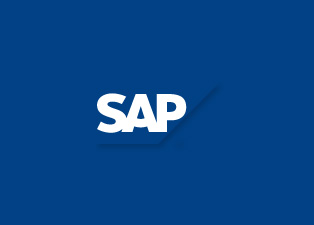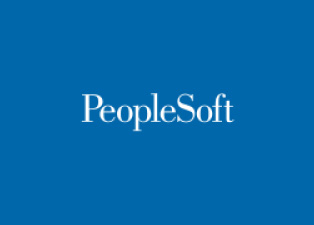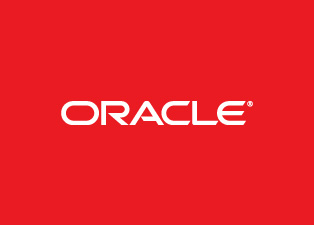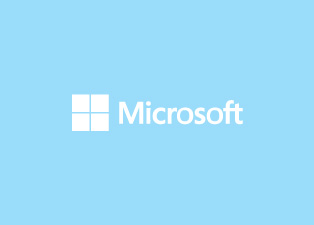WebSphere Process Server Online Training
WebSphere Process Server Online Training

WebSphere Process Server Online Training Course Content:
SOA Fundamentals
- Objectives
- Defining Service Oriented Architecture (SOA)
- Putting SOA in Context
- SOA As an Alignment Strategy
- The SOA Umbrella
- What s a Service?
- Service Actors
- Serving Up SOA
- Business Process Management
- BPM & Workflow
- SOA Governance
- SOA Governance Model
- SOA Job Role Impact
- Services Please!
- SOA Re-Organization
- What Makes a Good Design?
- Is This a New Concept?
- Service Orienting the Enterprise
- Service Oriented Thinking
- SOA Is Perfect NOT!
- Service Characteristics
- When Do I Need a Service?
- About Services in SOA
- Contract-Driven Software
- SOA Standards
- Summary
Introduction to WebSphere Integration Developer (WID) v6.1
- Objectives
- WebSphere Integration Developer (WID) v6.1
- SCA Basics
- Wiring Example
- Key Features of WID
- The Project Structure
- Working With Shared Components
- Using the IDE
- The Test Server
- The Build Process
- Controlling the Build Activities
- Exporting Applications
- SCA Artifacts Deployed to WebSphere Process Server
- Enterprise Service Bus (ESB)
- ESB Example
- Introduction to WebSphere Enterprise Service Bus (WESB)
- Introduction to WebSphere Process Server (WPS)
- Summary
Service Component Architecture (SCA)
- Objectives
- Need For a New Programming Model …
- Need For a New Programming Model
- SCA Vendor Support
- Service Component Architecture
- SCA Basics
- Assembling Services
- SCA Components
- Service Components
- References and Wires
- Wiring Example
- Service Components
- Imports
- Export
- Imports and Exports
- Service Implementation Types
- Summary
Business Objects
- Objectives
- What is a Business Object?
- Creating a New Business Object
- Editing a Business Object
- Advanced Data Modeling
- Refactoring Business Objects
- Private Business Object
- Data Type Inheritance
- Best Practices
- Summary
Service Interface Design
- Objectives
- What is a Service Interface?
- Uses of an Interface
- The Structure of an Interface
- Creating an Interface
- The Interface Editor
- Refactoring Interfaces
- Summary
Mediation Flow
- Objectives
- Introduction
- Uses of Mediation Flow
- High Level Structure
- Partner References
- Mediation Flow Editor
- The Request Pipeline
- Mediation Primitives
- Message Passing by Primitives
- Business Object Map
- Message Filter
- Service Invoke
- Sharing Data
- Message Element Setter
- The Response Pipeline
- Guidelines for Composite Service Development
- Assembling a Mediation Flow
- Summary
Mapping Interfaces and Business Objects
- Objectives
- Introduction to Mapping
- Business Object Maps
- Creating a Business Object Map
- Adding Business Objects to the Map
- Business Object Map Editor
- Types of Data Transformations
- Automatic Mapping
- Mapping Schema Wildcards
- Need for Reverse Maps
- Interface Maps
- Creating an Interface Map
- Adding Interfaces
- Interface Map Editor
- Types of Parameter Mappings
- Summary
Introduction to Service Oriented Analysis & Design (SOAD)
- Objectives
- Introduction to SOAD
- Applying OOAD Principles
- Encapsulation
- Encapsulation in SOAD
- Inheritance
- Inheritance in SOAD
- Polymorphism
- Polymorphism in SOAD
- Why OOAD Is Not Enough
- Granularity
- The Need for Loose Coupling
- The SOAD Methodology
- The SOAD Methodology Steps
- Stage 1: Requirements Gathering & Process Modeling
- Stage 2: Service Identification
- Stage 3: Service Implementation
- Stage 4: Process Implementation
- SOAD Stages and SOA Lifecycle
- Summary
WS BPEL 2.0 A Technical Overview
- WS BPEL 2.0
- Motivation
- History
- Basics
- BPEL Usage
- BPEL Constructs
- Activities
- BPEL Documents
- Imports
- Partner Links
- Example: a Buy-Sell Partnership
- Modeling Partnership in BPEL
- Variables
- Variable Properties
- Correlation Sets
- BPEL Activities
- Standard Attributes
- BPEL Basic Activities – invoke
- BPEL Basic Activities receive
- BPEL Basic Activities – assign
- BPEL Basic Activities – throw
- BPEL Basic Activities – rethrow
- BPEL Basic Activities – wait
- BPEL Basic Activities – empty
- BPEL Basic Activities – exit
- Structured Activities – sequence
- Structured Activities – if
- Structured Activities – while
- Structured Activities – repeatUntil
- Structured Activities – pick
- Structured Activities – flow
- Structured Activities – forEach
- BPEL Scopes
- BPEL Handlers
- Summary
Developing Business Process
- Objectives
- Creating a Business Process
- Process Variables
- Reference Partners
- The Interface Partner
- The Receive Activity
- The Reply Activity
- The Invoke Activity
- The Assign Activity
- The Snippet Activity
- Parallel Activity
- Choice Activity
- While Loop
- Receive Choice Activity
- For Each Activity
- Defining Conditions
- Assembling a Process
- Summary
Adapters
- Objectives
- What is an Adapter?
- Adapter Example
- The Adapter Pattern
- Resource Adapters
- Custom Adapters
- Adapter Based Services
- Advantages of Adapter Based Services
- Generating Adapter Based Services
- Communication Modes
- Outbound Communication
- Inbound Communication
- Summary
WebSphere Adapters
- Objectives
- Adapter and SOA
- Adapter Support from WID
- Outbound Processing
- Inbound Processing
- Enterprise Discovery
- Case Study
- Flat File Adapter
- Inbound File Adapter
- Configuring the Inbound Service
- Outbound File Adapter
- Configuring Outbound Service
- Adapter Administration
- Summary
Human Task Development
- Objectives
- Introduction
- Anatomy of a Task
- Types of Human Tasks
- Auxiliary Task Types
- The BPC Explorer
- To-do Task
- Creating Inline To-do Task
- Creating Regular To-do Task
- Creating Invocation Task
- Creating a Collaboration Task
- Editing Task Template
- Dealing With Task Expiry
- Providing GUI for Human Task
- Customizing BPC Explorer
- The Input Data Display JSP
- Output Form JSP
- Task Security
- Escalation
- Summary
Business Rules
- Objectives
- What is a Business Rule?
- Examples of Business Rules
- Why use Business Rules?
- Business Rules in WebSphere Integration Developer
- Business Rule Group
- Configuring a Business Rule Group
- Business Rule Group properties
- Business Rule actions
- Action Templates
- Rule Sets
- Configuring Rule Sets (1 of 2)
- Configuring Rule Sets (2 of 2)
- Decision Tables
- Configuring Decision Tables
- Rule Sets versus Decision Tables
- Assembling business rules
- Business Rules at Runtime
- Business versus Technical role
- Business Rules Tooling
- WebSphere tooling
- Business Rules Manager Web tool
- BRM Web tool Introduction
- BRM Architecture
- Business Rule Groups page
- Business Rule Group Search
- Summary
Selectors
- Objectives
- Overview of Selectors
- How do they work?
- Usage Examples for Selectors
- Selectors versus Business Rules
- Selectors in WebSphere Integration Developer (1 of 2)
- Selectors in WebSphere Integration Developer (2 of 2)
- Using XPath Selection Criteria
- The XPath Expression Builder
- Benefits of using Selectors
- Selectors at runtime
- Selector Administration
- Displaying Selectors
- Locating Selectors
- Modifying Selectors at runtime
- Choosing Selector Targets
- Modifying the Target
- Importing and Exporting Selectors
- Summary
Messaging and Asynchronous Communication
- Objectives
- Introduction
- Asynchronous SOA
- Basic Messaging Patterns
- SOA Callbacks …
- Callback Example
- Implementing Callbacks
- BPEL Correlation Sets
- Additional Uses of Callbacks
- Non-Blocking Calls in SOA
- Parallel Activity
- One-Way Non-Blocking Calls
- Assured Delivery
- Implementing the Publish Subscribe Pattern
- SOA Client Behavior
- BPEL Events Handling
- Event Handler Details 1/2
- Event Handler Details 2/2
- Summary
Messaging in Process Server
- WPS and Messaging Overview
- Asynchronous Operation Invocation
- Asynchronous Invocation
- Publishing a JMS Message
- Consuming a JMS Message
- Summary
Process Error Recovery
- Objectives
- Introduction
- Automated Recovery
- Manual Recovery
- What Can Go Wrong?
- Why Instances Fail?
- Web Service Invocation Failure
- SCA Invocation Failure
- Analyzing and Recovering Failed Events
- Synchronous SCA Invocation Failure
- Infrastructure Failure
- Recovering from Internal Failure
- Configure BPC Container
- Guidelines
- Review Questions
- Summary
Error Handling and Transaction
- Objectives
- Introduction
- Error Handling in a Service
- Designing Faults
- Error Handling in a Process
- Fault Handler
- Fault Handler Example
- Raising Faults in a Process
- Transaction in SOA …
- Transaction in SOA
- Transaction and Short Lived Business Process
- Transaction and Long Lived Business Process
- Example: Long Running Process
- Transaction Context Propagation
- Example: Transaction Context Propagation
- Compensation
- Compensation in a Microflow
- Compensation in a Long Running Process
- Example Compensation
- Compensation Handler
- Compensation Guidelines
Controlling Transaction and Compensation in WID
- Transaction and Microflow
- Long Running Process
- Guidelines for Long Running Process
- Activity Transaction Identifier
- Creating a Transaction Group
- Transaction and Parallel Activities
- Propagating Transaction Context
- Checklist for Propagation
- Compensation in WID
- Summary
Business Process Versioning
- Objectives
- What is Business Process Versioning?
- Business Process Versioning Example
- Why Do We Need to Version a Process?
- Creating a New Version of a Business Process
- Invoking a New Version of a Business Process
- Early Binding
- Early Binding Example
- Late Binding
- Late Binding Example
- Implementing Late Binding
- Discontinuing the Old Process
- Summary
Relationship Service
- Objectives
- Introduction
- Static Relationship
- Creating Static Relationship
- Using Static Relationship
- Dynamic Relationship
- New Object Creation
- Object Update Event
- Working With Verbs
- Creating a Dynamic Relationship
- Defining the Service Interfaces
- Using the Dynamic Relationship
- Assembling the Application
- Setting the Verb at Runtime
- Summary
Drop your query
Most Popular Courses
Achieve your career goal with industry recognised learning paths
What my Client's Say?
-
It was a great course over my expectations. I am eager to have another course wıth you as soon as possıble ~ R. Kamand
-
All in all, it was a very constructive and one in a lifetime experience. I'm so glad that I was part of it.~ T. Engin
-
It was the best decision I had ever made in my life. Although it was expensive for me, but I don't regret even for one second. ~ Maruti Malla
-
Thank you for this great course. I learned a lot of things, I met very nice people and I am happy that I had these 6 crazy weeks with you.".~ Najmul Shar A Baig
-
Very nice and friendly tutor and staff. The course was very fruitful, particularly the input sessions during the first half of it.~ Radha Nandyala
-
It was such great experience, though it was really intensive, it was worth doing it! Cant thank enough all team effort esp Mohan! .~ Rohan Kumar
-
The course was really good because it was a practical course.~ M.Radha patel
-
I liked this experience. Good tutor and nice mates. I will always remember it. ~ Jitu Bavaria











